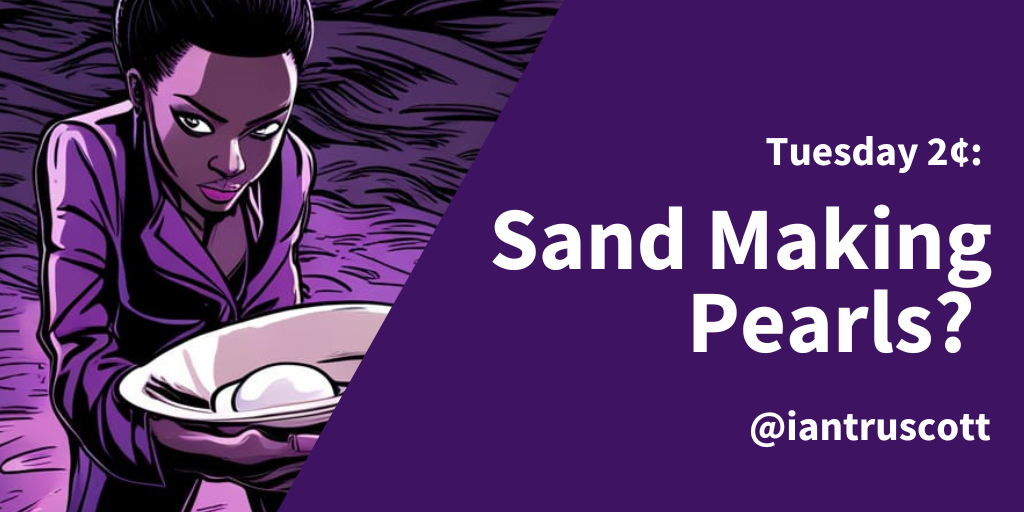I’ll be honest: I’m not sure if this one works, but this week, I am thinking about marketing attribution vs contribution, pearls and sand.
I was on a panel recently and asked about B2B marketing attribution.
A very smart question from the host and my response resonated with the audience when I quoted my old boss, Grant Johnson (who shares some great stuff at CMO Mentor), whom I’d chatted to on my podcast some time ago when he suggested we move from marketing attribution to marketing contribution.
Trust me, if Twitter was still a thing, people might have tweeted about it, but my wonderful co-panellist, Wendy Werve did post about it on LinkedIn.
For this post, an analogy came to me on my walk today that I could use to illustrate this.
You know how pearls are created from grains of sand washed into an oyster’s shell?
Our brand marketing contribution is sand, and the oyster is one of the 5% of our audience who’s in a position to buy who, by some marketing chance, we’ve caught the attention of, who hand in hand with us, embarks upon the buyer’s journey and our grain of sand becomes a pearl.
So far, so good….
But this analogy is better than I thought.
And if you know marine biology better than I do, you may already know why.
I researched, and it turns out that pearls don’t come from sand.
According to Live Science (once you click past the ads):
Despite what many people may think, pearls aren’t the result of an errant speck of sand weaseling its way inside the shell of an unsuspecting mollusk.
In fact, sand (which is common in the aquatic environments where mollusks live) isn’t involved at all. Instead, pearls are formed when an irritant, such as a food particle or a parasite, slips between the shells of an oyster or other mollusk and lodges into its mantle..
The genesis of our pearl could be pretty much anything in our buyers oysters environment (but sand). And for you interruption marketers out there, it could be an irritant.
Although I presume sand is the breeding ground of a parasite or the food that became a particle, that became the pearl, so it plays a role.
And yet, many of us (and please tell me it wasn’t just me) have heard and believed that some happy accident with sand creates the pearls, as evidenced by the fact that the environment in which the magic happens is full of the stuff.
So, two lessons here.
The first is about the difficulty of attributing the thing that created the pearl, which could be anything. As marketers, we create the environment (the sand), and that’s our contribution.
The second is we work in a discipline, marketing, that is not a science and is often defined by hearsay and conjecture. What do you, your boss or your peers believe creates pearls? Do they think it’s the sand?
And, as I’ve discovered from the Live Science data, you can’t attribute pearls to sand.
Aside from my ongoing argument with Grammarly, robots did not write any copy, but they did create the image, which was created using A.I. through NightCafe Creator
Fancy more of this?
Subscribe to my Rockstar CMO Newsletter

I’m a 3xCMO, now a marketing strategy advisor and podcast host at Rockstar CMO. Although, I’m not a rock star, but a marketing leader, strategist, content marketer, columnist, speaker, industry watcher, and creator of ART (Awareness, Revenue, and Trust) for the companies I work with. But most of all, I am an enthusiastic tea drinker.
You can find me on LinkedIn, Twitter, or now Threads! – or listen to my weekly podcast at Rockstarcmo.com
The half-baked thoughts shared on this blog may not reflect those of my employer or clients, and if the topic of this article is interesting or you just want to say hello please get in touch.
